2023 SLOconf Speakers
May 15-18, 2023

Adrian Hoban
Principal Engineer
Intel

Adrian Hoban
Principal Engineer
Intel
Adrian is a principal engineer leading cloud native resource orchestration for the Network and Edge Group in Intel. He has invested 20+ years becoming an expert on Cloud Native Orchestration, Service Orchestration and Management, Automation and Cloud Native Observability, with many of those years focused on applying and enhancing cloud technologies for some of the most demanding, high-performance, deterministic networking applications. Now he leads strategy, requirements, and architecture definition for cloud native resource orchestration of distributed networking application that span from the cloud to the edge.
In the past, Adrian created and influenced the ecosystem to adopt Enhanced Platform Awareness which is a suite of platform enabled capabilities at different layers of orchestration stacks. He was one of the contributors of Management and Orchestration standards definition for Network Functions Virtualisation bringing platform aware virtualisation technology to the Communications Service Providers for high performance, interoperable NFV solutions. Adrian was a co-founder and first Technical Steering Committee lead of the Open Source Management and Orchestration (OSM) community.
Adrian is also a keen sports fan, loves outdoor sports and in particular Gaelic games, rugby and mountain biking.

Adriana Villela
Sr. Developer Advocate
Lightstep

Adriana Villela
Adriana is a Sr. Developer Advocate at Lightstep from Toronto, Canada, with over 20 years of experience in tech. She focuses on helping companies achieve reliability greatness through Observability, DevOps, and SRE practices. Before Lightstep, she was a Sr. Manager at Tucows. During this time, she defined technical direction in the organization, running both a Platform Engineering team, and an Observability Practices team. Adriana has also worked at various large-scale enterprises, including Bank of Montreal (BMO), Ceridian, and Accenture. At BMO, she was responsible for defining and driving the bank's enterprise-wide DevOps practice, which impacted business and technology teams across multiple geographic locations across the globe.
Adriana has a widely-read technical blog on Medium (https://adri-v.medium.com), which is known for its casual and approachable tone to complex technical topics, and its high level of technical detail. She is also an OpenTelemetry contributor, HashiCorp Ambassador (https://www.credly.com/badges/551d47a7-67cb-41bb-baeb-8c90f114f03a/public_url), and co-host of the On-Call Me Maybe Podcast (https://oncallmemaybe.com).
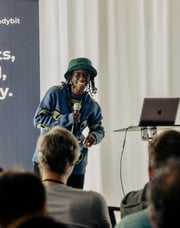
Alayshia Knighten
Manager of Onboarding Eng
Honeycomb

Alayshia Knighten
Alayshia Knighten is an Engineering Manager of Product Training at Honeycomb with many years of experience in the DevOps realm. Alayshia specializes in enhancing technical and team-related experiences while educating customers on their journey with and beyond observability. In her words, “Getting shit done while identifying how to accelerate at the person beyond the tooling is the real meat and potatoes.” She enjoys solving the “so, how do we solve that?” problems and meeting people from all walks of life. Her tiny hometown and Southern background inspire Alayshia. In her spare time, she enjoys hiking, grilling, painting, and making random bird calls with her father.
.jpg?width=180&name=aleksandra-dziamska%20(2).jpg)
Aleksandra Dziamska
Engineering Manager
Nobl9
.jpg?width=180&name=aleksandra-dziamska%20(2).jpg)
Aleksandra Dziamska
Engineering Manager
Nobl9
Aleksandra works as an Engineering Manager at Nobl9.
Her over 10-year journey in software development started with being a software engineer and moved towards team leadership and management. Throughout her career, she strived to focus on what she feels is most important (in IT as in life): people. Translating it to Engineering Manager dialect: lead the engineering team to deliver best value to the end users, effectively combining Product and Engineering priorities. She explores the way SLOs can help here.

Alex Hidalgo
Principal Reliability Advocate
Nobl9

Alex Hidalgo

Alex Kudryashov
Lead software engineer
New Relic

Alex Kudryashov
Lead software engineer
New Relic
These days I am leading a team that is developing Service Level Management in New Relic. I love solving challenges at intersection of product and engineering, so I am creating tools for developers like myself.
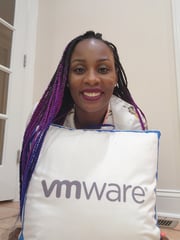
Alexandra McCoy
SRE Engineer & VMware Enthusiast
VMware

Alexandra McCoy
Alexandra is an SRE Engineer at VMware. She is passionate about Cloud Native, Open Source, and Reliability Engineering communities. Although VMware is home, she was introduced to the Cloud while in IBM - Public Sector and then transitioned into IBM Cloud. She later gained additional hybrid cloud experience at Diamanti, focusing on E2E product support for their Kubernetes based appliance. She is excited about the industry's direction and hopes to contribute in a way that only helps improve the cloud space.

Ana Margarita Medina
Staff Developer Advocate
Lightstep

Ana Margarita Medina
Ana Margarita is a Staff Developer Advocate at Lightstep and focuses on helping companies be more reliable by leveraging Observability and Incident Response practices. Before Lightstep, she was a Senior Chaos Engineer at Gremlin and helped companies avoid outages by running proactive chaos engineering experiments. She has also worked at various-sized companies including Google, Uber, SFEFCU, and Miami-based startups. Ana is an internationally recognized speaker and has presented at: AWS re:Invent, KubeCon, DockerCon, DevOpDays, AllDayDevOps, Write/Speak/Code, and many others.
Catch her tweeting at @Ana_M_Medina about traveling, diversity in tech, and mental health.

Anais Dotis-Georgiou
Lead Developer Advocate
InfluxData

Andrew Clay Shafer
Principal
Ergonautic

Andrew Clay Shafer
Principal
Ergonautic
Andrew Clay Shafer evangelized DevOps tools and practices when DevOps was not a word before falling in love with SLOs in theory and practice. Living at the intersection of Open Source and Cloud Computing across two decades, they gained experience in every role in software delivery from support and QA to product and development. Andrew now focuses on engineering operable resilient socio-technical systems and communities as a founder of Ergonautic.

Andrew Howden
SRE Engineering Manager
Zalando

Andrew Howden

Andrew Newdigate
Distinguished Engineer
GitLab Inc.

Andrew Newdigate
Andrew is a seasoned engineer with over two decades of experience in software development and reliability engineering. As a Distinguished Engineer at GitLab, he is responsible for the reliability and availability of GitLab's SAAS properties: GitLab.com and GitLab Dedicated. He is a strong advocate for using SLOs, error budgets, and observability data to drive change and manage technical debt. Previously, Andrew co-founded the developer community site Gitter in 2012, where he served as CTO until its acquisition by GitLab in 2017.

Ashley Chen
Software Engineer
Datadog

Ashley Chen
Software Engineer
Datadog
Ashley is a software engineer on the SLO team at Datadog. When she’s not working, she enjoys mentoring future engineers at Emergent Works and exploring the transit history of New York City.

Christian Long
Senior Software Engineer & Skeeball Champion
3M

Christian Long
Christian has been rolling skeeball competitively in Brooklyn, NY for 11 years and nationally for 7 years. He started out as a straightforward 40-roller, as is both the conventional recommended starting approach and a widely regarded standard for high level competition. Eventually he started dabbling in hybrid rolling and came to develop a fine-tuned highly tactical strategy that minimizes risk and has virtually no ceiling, enabling him to compete with the best rollers in the world.

Dan Venkitachalam
Software Reliability Engineer
Atlassian

Dan Venkitachalam
Software Reliability Engineer
Atlassian
Dan is a veteran software engineer and technical manager with over 20 years of experience. He currently works on the Tome team at Atlassian, helping internal organisations to define and achieve their operational goals with SLOs.

Daniel Golant
Senior Software Engineer

David Bartok
Software Engineer
Meta

David Bartok
David is a Software Engineer at Meta. He is currently working in the Monitoring space, primarily focused on SLICK, the company’s SLO tracking platform. Previously, he was part of the GraphQL team at Meta, where he optimized cache performance and efficiency. Before joining Meta, David worked at Bloomberg as a full-stack developer in the Mobile Market Data team.

Deepak Kumar
Senior Cloud Infrastructure and Devops
Zenduty

Deepak Kumar
I'm a Senior Cloud Infrastructure and Devops Engineer at Zenduty - an incident management and response orchestration platform, trying my best to make sure that every service and application at our org is secure, reliable and accessible 24/7. I have experience working with and am passionate about cloud services, orchestration engines, enterprise networking, observability platforms and figuring out how they work best together. Looking to talk about my experiences and how we manage mission critical operations at an organisation that has no room to fail.

Derek Osborn
Incident, Problem and Service Level Manager
Flexera

Devin Cunningham
Software Engineer
Procore

Devin Cunningham
Software Engineer
Procore

Emily Gorcenski
Lead Data Scientist
Thoughtworks

Emily Gorcenski
Emily has over ten years of experience in scientific computing and engineering research and development. She has a background in mathematical analysis, with a focus on probability theory and numerical analysis. She is currently working in Python development, though she has a background that includes C#/.Net, Unity3D, SQL, and MATLAB. In addition, she has experience in statistics and experimental design, and has served as Principal Investigator in clinical research projects.

Eric Moore
Ex-chemist SRE

Frances Zhao-Perez
Senior Director of Product Management
Salesforce

Frances Zhao-Perez
Senior Director of Product Management
Salesforce
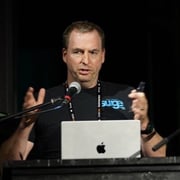
Fred Moyer
Engineering Geek

Greg Arnette
Co-founder & CPO
CloudTruth

Gwen Berry
Site Reliability Engineer
IAG

Gwen Berry
Site Reliability Engineer
IAG
Junior Site Reliability Engineer, working in an SRE enablement team at IAG.

Hazel Weakly
Infrastructure Team Lead

Hezheng Yin
Co-founder & CTO / Creator
Apache DevLake
Merico

Hezheng Yin
Hezheng is a perceptive and persistent pioneer in applying technology to make the world a better place. At Merico, he leads the engineering and research team to build innovative algorithms to help developers quantify the impact of their work. Before this, his research focuses on empowering the next generation of education technology with artificial intelligence and machine learning. Hezheng got his bachelor's degree from Tsinghua University and was pursuing his Ph.D. in computer science at UC Berkeley.

Imaya Kumar Jagannathan
Principal Solution Architect
AWS

Imaya Kumar Jagannathan
Principal Solution Architect
AWS

Ioannis Georgoulas
Director of SRE
Paddle.com
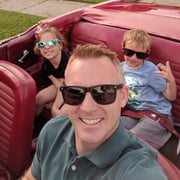
Jason Greenwell
SRE Leader
Ford - Model e

Jason Greenwell
Jason is an SLO and developer expereince advocate that has held a number of technical leadership positions at Ford and Ford Credit over the past 20 years. He is currenlty heading up SRE for Model-e's Cloud Platform driving SLO adoption and SRE culture throug the org.
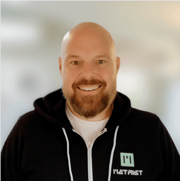
Jeff Martens
CEO & Co-Founder
Metrist

Jeff Martens
Jeff has built observability products and developer tools for more than 12 years. The first company he founded, CPUsage, was a pioneer in the serverless computing space before AWS Lambda existed. Later he joined New Relic pre-IPO to focus on new products. There he served on the team creating the company’s high-performance event database, before leading Real User Monitoring and growing the product into the company’s 2nd largest revenue generator. Jeff then joined PagerDuty pre-IPO where he worked on designing, building, and launching a suite of business analytics products. Jeff is an alumnus of the University of Oregon and works between Portland, Oregon and the San Francisco Bay Area.

Jessica Kerr
Engineering Manager of Developer Relations
Honeycomb

Jessica Kerr
Jessica Kerr is a developer of 20 years, conference speaker of 10, and ringleader of a household containing two teenagers and their cats. She works and speaks in TypeScript, Java, Clojure, Scala, Ruby, Elm etc etc. Her real love is systems thinking in symmathesy (a learning system made of learning parts). She works at Honeycomb.io because our software should be a good teammate and teach us what is going on. If you're into sociotechnical systems, find her blog and newsletter at jessitron.com.

Justin Hoang
Software Engineer
Procore
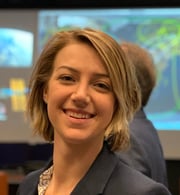
Kayla Annunziata
SRE Platform Development Sr Mgr
Capital One

Kayla Annunziata
SRE Platform Development Sr Mgr
Capital One
Kayla is an Enterprise SRE Platform Development Sr Mgr at Capital One to drive adoption of SRE best practices across all Capital One applications.
Before joining FinTech she was a Software Engineering Manager at Lockheed Martin supporting the Space Industry developing reliable flight software products for NASA’s Orion Spacecraft Artemis 1 mission that successfully broke the record for the farthest distance from Earth traveled by an Earth-returning human-rated spacecraft by ~20,000 miles.

Keri Melich
Site Reliability Engineer
Nobl9

Keri Melich
Keri is a SRE working to help scale and secure the Nobl9 platform. Before that, she has worked in DevOps building secure and scalable solutions for internal users. She is also passionate about building a safe and diverse workplace and spends her free time hiking, woodworking, and 3D printing.

Kyle Forster
Founder
RunWhen

Lukasz Dobek
Software Engineer
Nobl9

Lukasz Dobek
Currently, he’s developing Service Level Objectives platform at Nobl9, helping to make a cultural shift to the Site Reliability Engineering mindset.

Marcus Merell
VP of Technology Strategy
Sauce Labs

Matthias Loibl
Senior Software Engineer
Polar Signals

Matthias Loibl

Max Knee
Staff Software Engineer
The New York Times

Michael Knox
Platform SRE Team Lead
ANZx

Natalia Sikora
Product Manager
Nobl9

Natalia Sikora
Product Manager
Nobl9
Natalia is a Product Manager at Nobl9. She enjoys collaborating with cross-functional teams to solve complex problems for customers. Before joining Nobl9 in the noble pursuit of reliable software, she spent 10 years developing, publishing, and managing various products for one of the world’s largest educational companies. Outside of work, you can find her hiking in the mountains, working on another art piece at a printing workshop, or playing video games.
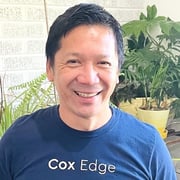
Neil Pagaduan
Manager of Technology & Engineering
Cox Edge

Neil Pagaduan

Ricardo Castro
Principal Site Reliability Engineer
FanDuel
Blip

Ricardo Castro

Roman Khavronenko
Software Engineer
VictoriaMetrics

Roman Khavronenko

Sal Furino
CRE

Sal Furino
Sal Furino is a Customer Reliablity Engineer. During his career he's worked as a TPM, SRE, Developer, Sys Admin, and IT support. While not working he enjoys cooking, gamings, traveling, skiings, and golfing. Sal lives in Queens with his parter and has a BS in Applied Mathematics from Marist College.

Sally Wahba
Principal Engineer
Splunk

Sally Wahba
Principal Engineer
Splunk
When not working you will find her doing computer science outreach activities, reviewing for technical conferences, mentoring, and learning Spanish.

Sandeep Chatra Raveesh
Observability Lead
eBay

Sasha Rosenbaum
Principal
Ergonautic

Sasha Rosenbaum
Principal
Ergonautic
Sasha is Principal at a new venture, Ergonautic
With a degree in Computer Science, an MBA, and two decades of experience across development, operations, product management, and technical sales, Sasha Rosenbaum brings a unique perspective to optimizing the organizational flow of work, bridging gaps with empathy and insight.

Sergey Sidorov
Software Engineer on SLO Monitoring (SLICK)
Meta

Sergey Sidorov
Software Engineer with a track record of building & shipping complex software with primary focus on infrastructure and advanced backend systems. My experience includes working on high-throughput messaging infrastructure, trade execution engines, and large-scale monitoring and observability systems. Below are keywords that might be useful.

Shubham Srivastava
Head of Developer Relations
Zenduty

Shubham Srivastava
Take pride in making mistakes, learning from them and advocating for best practices for orgs setting up their DevOps, SRE and Production Engineering teams.
A zealous and eternally curious professional, fascinated by stories from DevOps, Incident Management and Product Design; hoping to solve real-world problems with the skills and technology I'm actively amused by. An orator, writer, and hopeful comedian trying his very best to do something I'm proud of everyday.

Stephan Lips
Software Engineer and SLO Advocate
Procore

Stephen Townshend
Developer Advocate (SRE)
SquaredUp

Stephen Townshend
Our industry is full of buzzwords and exaggerations, it can be hard to know what is real or not. Stephen strives to take these complex technical concepts and to simplify and present them in a way everyone can understand and apply (and to call out when something is too good to be true).
Stephen lives in Auckland, New Zealand and currently works as a Developer Advocate for SquaredUp, as well as promoting and improving observability and SRE practices internally in the organisation.
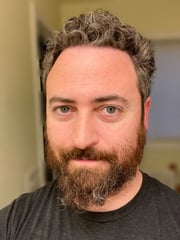
Stephen Weber
Staff Site Reliability Engineer
Procore

Stephen Weber

Steve McGhee
Reliability Advocacy Engineer
Google SRE

Steve Upton
Principal QA Consultant
Thoughtworks

Steve Upton

Steve Xuereb
Staff Site Reliability Engineer
GitLab Inc.

Surya Bhagvat
Director, SRE
Harness

Surya Bhagvat
Director, SRE
Harness

Thijs Metsch
Researcher
Intel Labs

Thijs Metsch
Researcher
Intel Labs
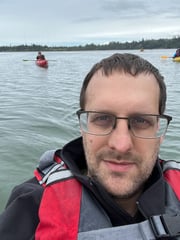
Toby Burress
SRE
Dropbox

Toby Burress
SRE
Dropbox

Troy Koss
Director, Enterprise SRE
Capital One

Troy Koss
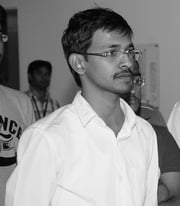
Vijay Samuel
Observability Architect
eBay
